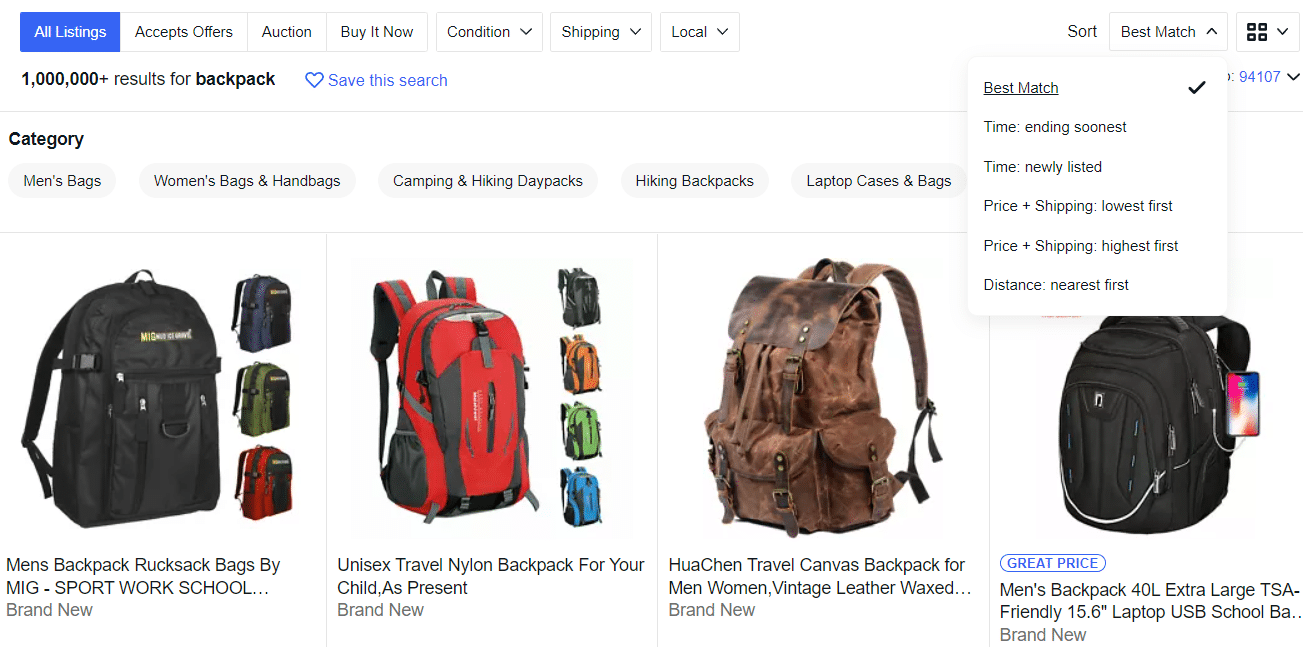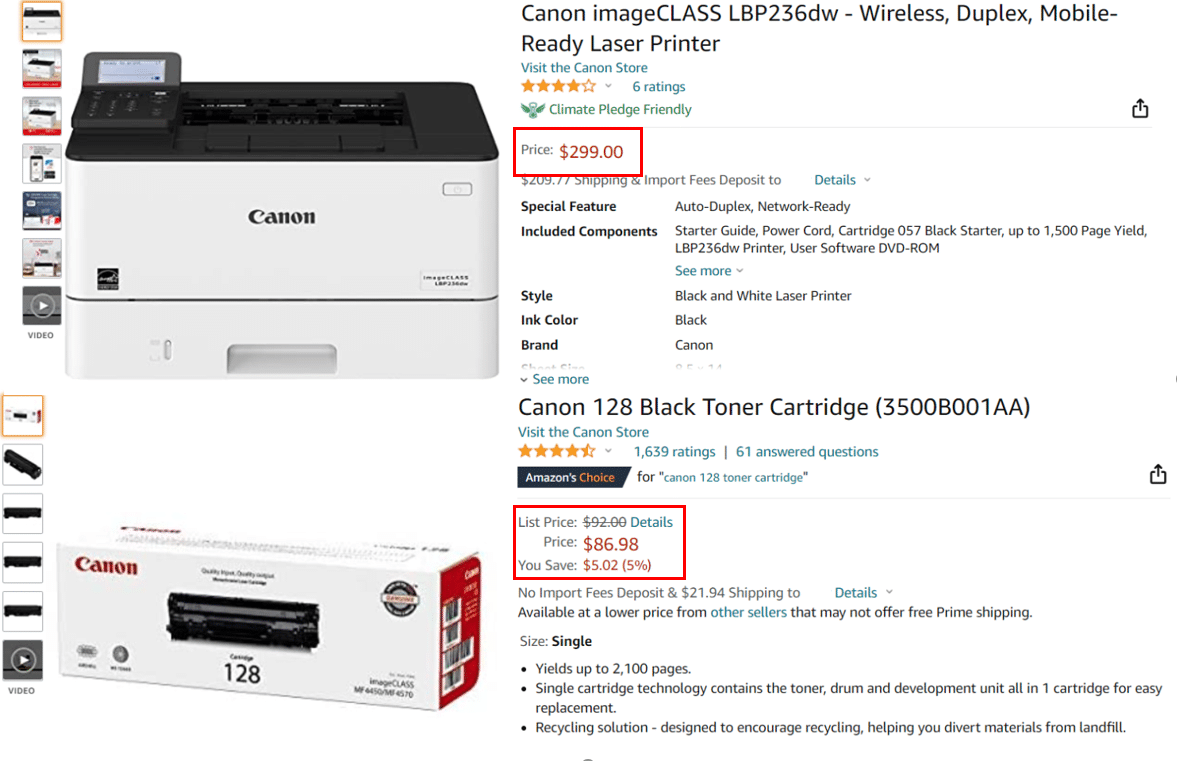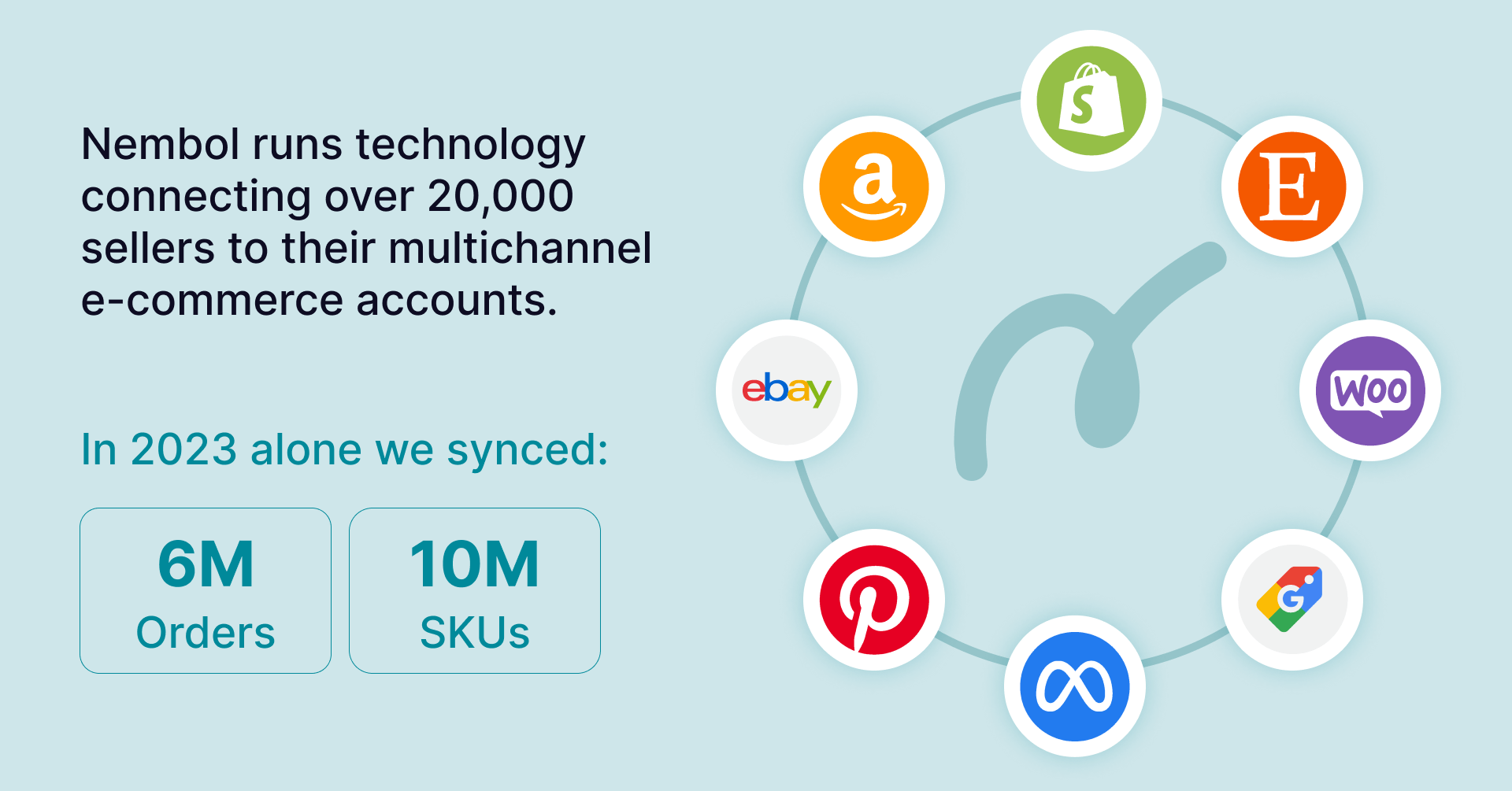Last update November 12, 2023
Overview
Having multiple eCommerce pricing strategies is essential to running a profitable business.
Deciding how to price your products is more elaborate than simply obtaining a good profit margin, and this article explains the most established pricing strategies and their suitability.
Unlike the physical retail experience, online shoppers usually scroll across hundreds of products, and capturing their attention is a little more complex than having the best deal.
Online pricing is about having a competitive price and staying dynamic to respond to the market changes and customer purchase behavior. But figuring out which best practice to follow is not a breeze, especially for multichannel retailers, who need to differentiate pricing according to the target channels.
In the next paragraphs, you will learn about the best eCommerce pricing strategies to follow and how to identify the best fit for your business.
eCommerce price optimization
How do you optimize your price?
Manually adjusting prices is time-consuming and prone to errors. At the same time, when multiple sellers offer the same product, the listing’s page will ‘award’ the most competitive seller the Buy Box (Amazon), also known as Best Match (eBay).
From the customer’s point of view, being able to quickly add a product to one’s basket is key. Only a few buyers will dedicate the time to weigh all options, compare sellers’ feedback, and scroll through their profiles.
Across all platforms, the buy box/best match shortcut guarantees high visibility and a higher conversion rate.


How do you win the Buy Box?
Major retailers like Amazon and Ebay offer the option of automated pricing. Pricing algorithms analyze large data pools and assign a weight to the performance metrics of competing sellers, and their prices. Platforms then reprice your product accordingly, sparing you the effort of manually researching the price of other sellers.
The disadvantage of this repricing process is that you don’t have full control over it, with the threat of reaching an unhealthy margin if another seller consistently lowers their price.
There is, luckily, rules-based pricing, which allows sellers to leverage the sites’ powerful algorithms while also setting rules that help them remain profitable and in control. This becomes a highly efficient pricing strategy for eCommerce, particularly when combined with other tactics.
For example, pricing changes can be carried out at different times of day, such as when page visits are known to be quiet or busy, or when a competitor is likely to be out of stock.
You can establish pricing trends based on customer behavior and use software like Nembol to improve your responsiveness through functions such as the bulk edit, which will help deal with how the market changes.
Learn how to sell multichannel: get free education, tips, and inspiration. Start growing your successful multichannel business.
By entering your email address, you accept our Privacy Policy and Terms of Use. Totally free. Unsubscribe at any time.
What is the smartest price strategy?
There is no single winning pricing strategy in the eCommerce business, but we can affirm that the smartest pricing strategy is the one that takes into account and enhance the characteristics of your products.
However, because of the marketplaces’ different requirements and peculiarities, it is not easy to identify a single strategy to pursue. Indeed, running a multichannel business, you will need to manage multiple pricing strategies and respond quickly to changes in the market and the attitudes of competitors.
In the following lines, you will be introduced to a roundup of eCommerce pricing strategies that you can implement to improve your positioning within the different online sales platforms.
The purpose of this guide is to help sellers to up channels’ search results without having to invest money in expensive advertising campaigns.
Each of those marketplace pricing strategies suits different sellers and products. Hence, consider following and implementing the one you think might fit your business and needs the best.
eCommerce best practices: winning pricing strategies
Benchmark competitors price
A key aspect here is knowing your competition. Depending on the product category, even a slight retail price decrease can go a long way in the value perception of price-sensitive shoppers.
By researching brands and sellers with the same or similar offerings, you can begin to actively promote your listings ahead of competitors. At the same time, occasional and small price increases are a common pricing psychology tactic as well. It can convey higher quality or signal a more premium offering.
The most trusted pricing strategy on eCommerce is definitively labeling your products with competitive pricing, based on the multiple search results shoppers encounter.
Employ a price skimming strategy
Another eCommerce pricing strategy worth pointing out is price skimming.
Price skimming occurs when a company introduces a product with the highest possible price and then gradually decreases it.
The best price skimming examples are especially seen among high-tech companies. For instance, the Apple price skimming strategy is one of the best-known, and it’s used for the launch of iPhones.
The initial ‘hype’ comes with a premium price that loyal customers are willing to pay, while later on, more cost-sensitive shoppers can be attracted as the price drops.
Price-skimming is difficult when the market is saturated, so it is best employed by brands with a strong brand reputation and innovative products.
Test a penetration price strategy
In a sense, the reverse strategy is penetration pricing, where a business offers a low price during its initial offering and, after new shoppers are attracted, the price is raised.
This is based on the expectation that once customers try the product at a low price, they will return to it in the future, perhaps even switching from a different brand
A good penetration price example is online grocery, particularly as promotions take place frequently and offer businesses the chance to win market share away from their competitors.
Discount and seasonal pricing are both well-known examples of the penetration pricing strategy, so chances are you have probably used these if you operate on e-commerce platforms. The initial short-term traffic and sales uplift leads to new customers for your brand in the long term.
Discount complementary goods
It is worth mentioning among the pricing strategy for your eCommerce business, the practice of discounting complementary goods. This is an especially handy method for categories like electronics, where one product often requires accessories or additional compartments.
Offering a discount on one of the complementary products encourages customers to buy from your store. Depending on the analytics software you use, it is likely that you will have visibility of what other products customers add to their basket or look for when making a purchase under your store.
If you offer such similar products, shoppers have an incentive to place an order from the same seller or vendor and so bundle pricing is one of the best ways to increase the average order volume.
As a tip, it is worth remembering that customer delivery fees are not always absorbed or shown on your buy box, so knowing what the platform charges at checkout is also a key element of setting a reasonable price.


Run a multiple pricing strategy
As mentioned above, multichannel retailers may require different eCommerce pricing strategies.
The first step to identifying and setting a good price is to consider all your channels fixed and percentage fees, such as commission (Amazon referral fee is an example), fulfillment fees, and % marketing costs.
For instance, Amazon fees are more expensive than Etsy fees, so to have an optimal mark-up on the product sale, you may consider setting a higher price for your Amazon listings than the Etsy ones.
Of course, manually editing pricing every time you need to list on different channels, or update them for the seasonal sales, might be burdensome and extremely time-consuming.
That’s why Nembol has developed an easy tool that allows you to set multiple pricing rules in each of your channels. So you can list your products and automatically adjust pricing to meet your needs.
With Nembol, you can set both percentages and fixed amount rules to adjust the prices of your products according to the channel on which you’re bulk publishing. Employing one of the above-mentioned eCommerce pricing strategies has never been so easy.
Using Nembol pricing rules, you can:
- Bulk discount your products for seasonal sales.
- Programmatically raises or lowers the prices.
- Adjust prices to match different exchange rates.
- Adjust channel selling fees.
- Improve the control over your selling mark-up.
Moreover, with Nembol, you can centrally bulk update your product with a click! Change prices, quantities, and product details across multiple channels.
Read this article to read more on this feature: Mass update on eBay, Etsy, Amazon, and Shopify


In essence, given the shifting market trends and complex motives behind shoppers’ decisions, it is important to utilize different pricing tactics, responding to the seasonality of different products, special e-commerce days (like Amazon Prime Day), as well as any unexpected price hikes that affect your margins.
A large element of pricing optimization is trial and error so do not be afraid to test different tactics or sell at a loss for a week or two.
The best online sellers stay agile and reform their pricing strategy as they learn more about the market they compete in and the type of shopper they attract.
Try Nembol for free: enjoy a 14-day trial
No credit card required


